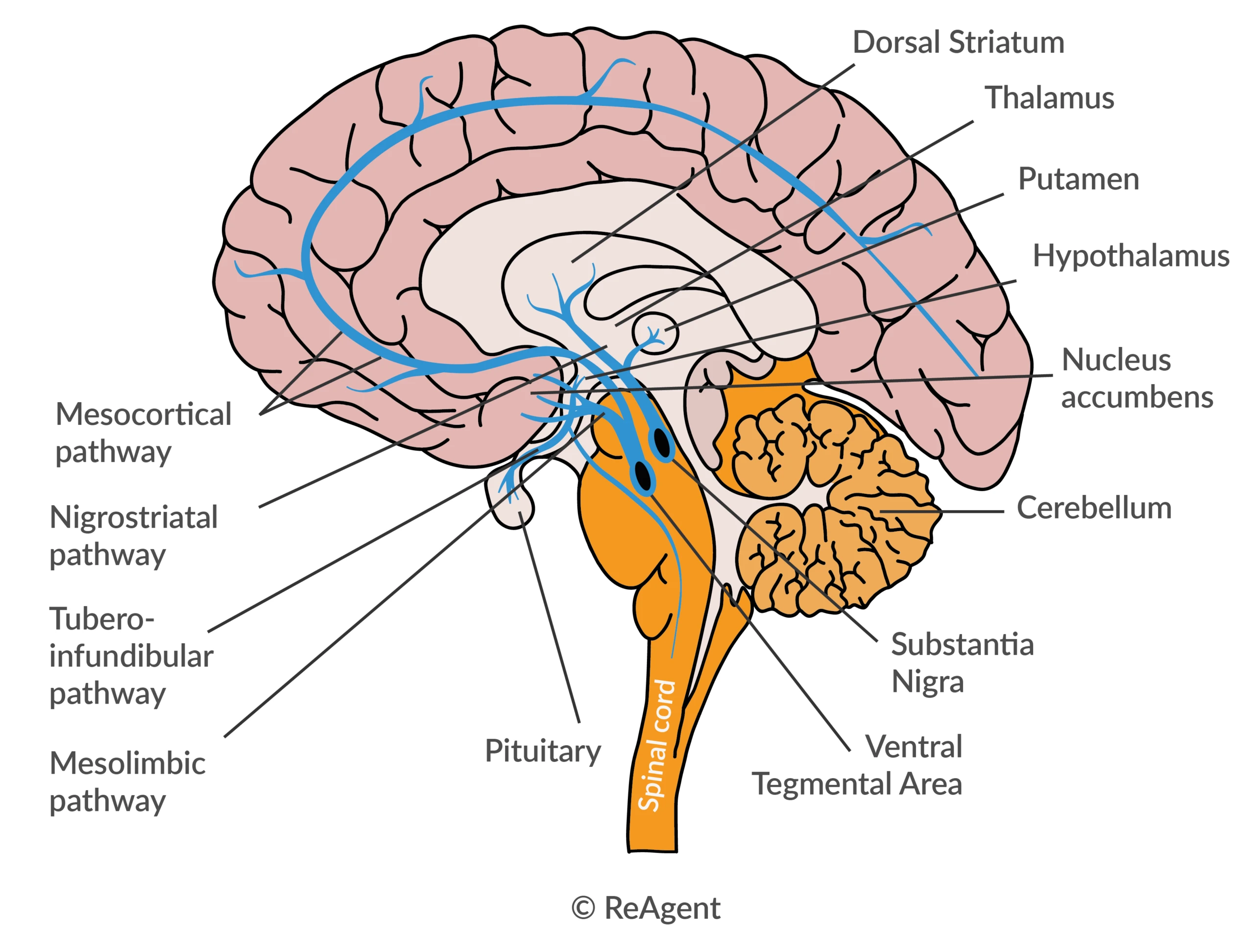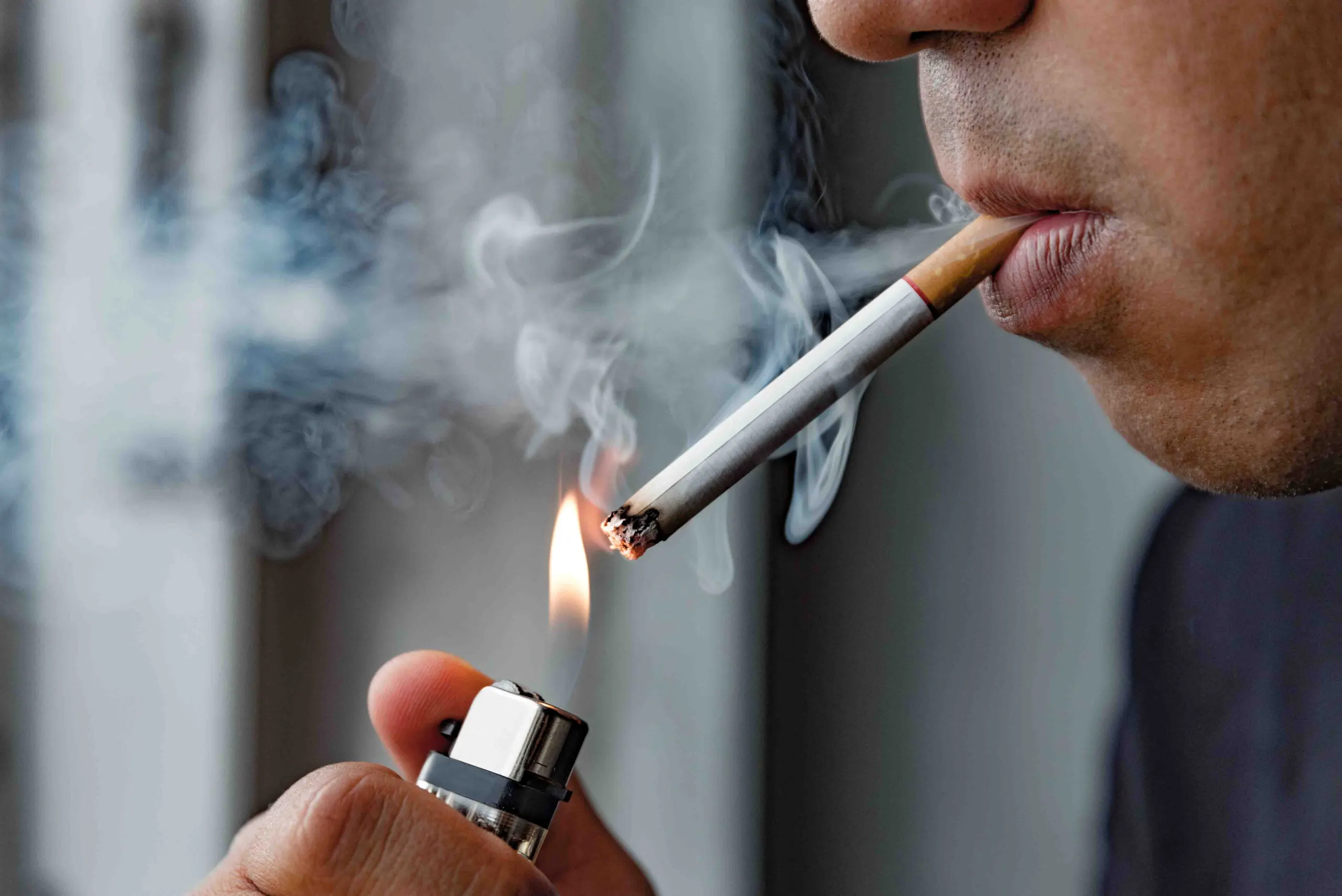The chemistry of addiction is centred in the brain and the way it produces certain chemical interactions. In particular, dopamine is responsible for the feeling of pleasure.
Our brain is like a chemical manufacturer that produces various types of neurotransmitters and hormones. Some of the most important ones have a direct effect on the brain itself, acting as mood modulators, painkillers, and sleep cycle regulators. Collectively, the four most important neurochemicals are called the ‘happiness hormones’. These chemicals each play a role in the chemistry of addiction.
As we explain in this article, the process of becoming truly addicted to something can be boiled down to brain chemistry. It’s all about how the brain becomes dependent on the pleasure stimulus of the chemicals it produces or metabolises.
In this post:
Why does addiction happen?
Addiction is a conditioned response that happens over time due to repetitive and excessive stimulation or ‘highs’ due to some pleasurable activity or substance. The need for regular or constant highs hijacks the normal functioning of the brain’s pleasure pathways.
Consequently, the brain develops some level of insensitivity or tolerance, meaning it needs to seek a higher dosage of pleasure-inducing substances. Without this pleasure, depression and lethargy can take over.
Addiction is a physiological-psychological condition of dependency on a chemical substance like alcohol or nicotine, an activity such as extreme sports, or even a person. When someone becomes addicted to something, a physical change occurs in the brain. This change effectively rewires the brain’s pleasure-seeking neurological pathways.

It starts with a place deep in the brain called the ventral tegmental area, or VTA. This region releases a chemical messenger known as dopamine whenever we’re doing pleasurable activities, such as eating delicious food, watching comedy shows, or conversing with a friend.
The dopamine is received by another area in the brain called the nucleus, which controls emotions and motivations. A surge of dopamine stimulates the nucleus accumbens, giving us the sensation of pleasure and motivation to repeat what we have done to stimulate the release of dopamine.
The amount of dopamine in the brain is normally between 0 and 30 pg/mL (195.8 pmol/L), although it may increase slightly when we’re doing something pleasurable. However, illicit drugs like meth and cocaine can supersize the amount of dopamine in the brain, increasing it by as much as ten times the normal value.
When this happens, the brain develops a dependency on, or addiction to, the particular substance that’s being used to experience the desired highs. The same mechanism applies to non drug-related addictions, such as gambling, but these types of addictions take longer to develop compared to drug addiction.
The science of addiction
The science of addiction focuses on the chemical and physiological mechanisms of addiction. It also considers the genetic and socioeconomic factors that influence the tendency and susceptibility of some individuals to become easily addicted to certain substances or activities.
Why some people are more prone to addiction
Addiction is a medical disorder that starts from a habit. When the brain develops a high level of tolerance for dopamine, it requires a higher dosage of the addicting substance or activity to maintain a feeling of normality or wellbeing. Nonetheless, habit is not the only factor; genetics play a role too.
There’s evidence to suggest that addiction can run in families, meaning some individuals may be genetically predisposed to addiction. No single gene is directly responsible for this, but rather it’s the convergence of several genes that results in a predisposition to addiction. Scientists estimate that genes contribute to 40-60% of addiction risk.
An individual’s socioeconomic circumstances is another crucial factor. Smoking, for example, is much more prevalent amongst young adults from a lower socioeconomic status. The habit of smoking can lead to nicotine addiction.
Why do people get addicted to alcohol?
There are several factors that affect the tendency of some people to become addicted to alcohol. The same mechanism is involved as previously mentioned; the only difference is the focus of the addiction.
Psychological factors include impulsiveness, low self-esteem, trauma, and depression. There are also various socioeconomic and genetic factors involved too.
Regardless of the cause, a person typically goes through the following five stages of the addiction cycle:
 Why do people get addicted to drugs?
Why do people get addicted to drugs?
If you want to know more about the mechanism of drug addiction and why some people become addicts, you can watch the video below. It explains the brain chemistry involved in the process of being addicted to something.
Summary
Addiction is a physiological-psychological disorder that’s related to brain chemistry. The brain’s reliance on regular highs effectively rewires its pleasure-seeking neurological pathways.
As a result, the brain needs a higher dosage of the pleasure-inducing substance or activity to achieve the same effect. Several factors are involved in the process of addiction, including genetics, socioeconomic circumstances, and the psychological profile of an individual.
















